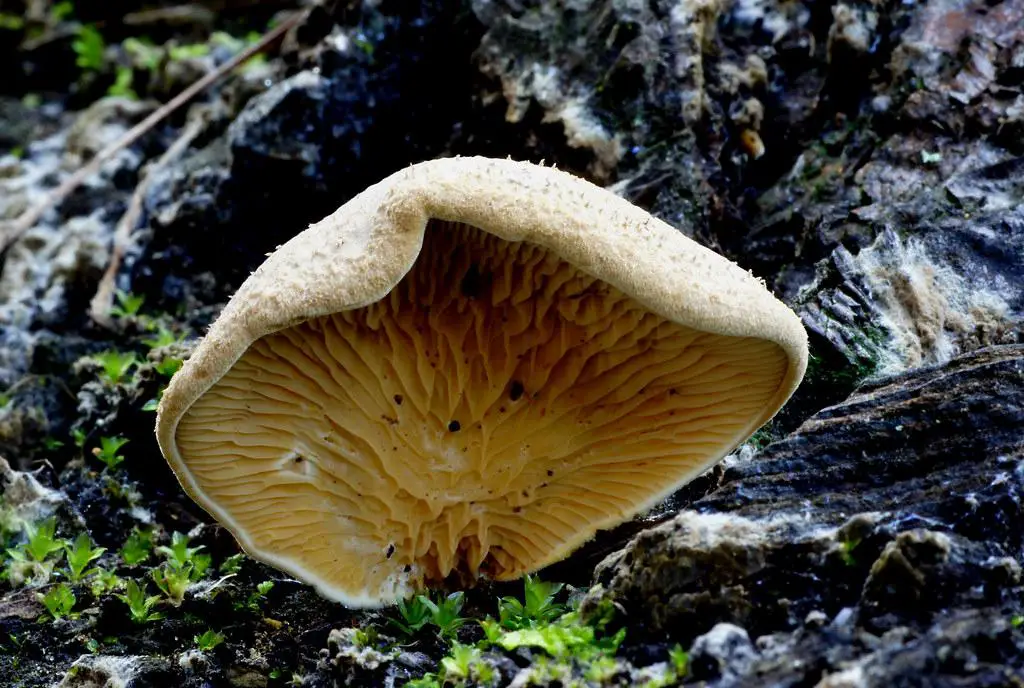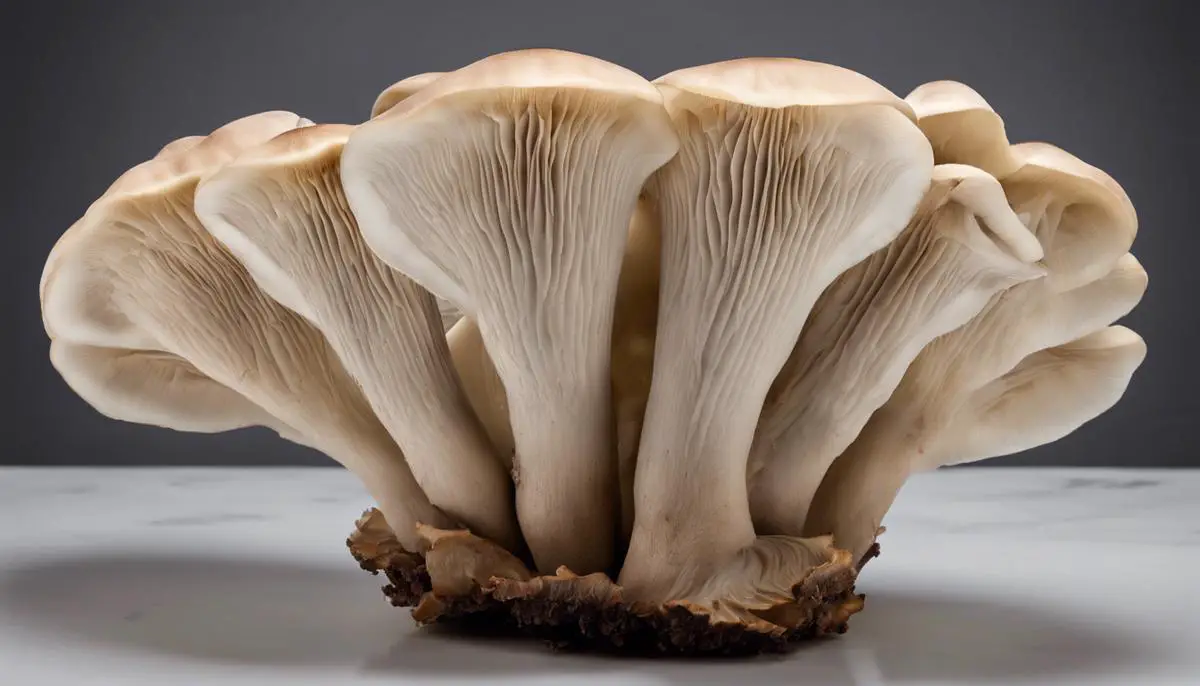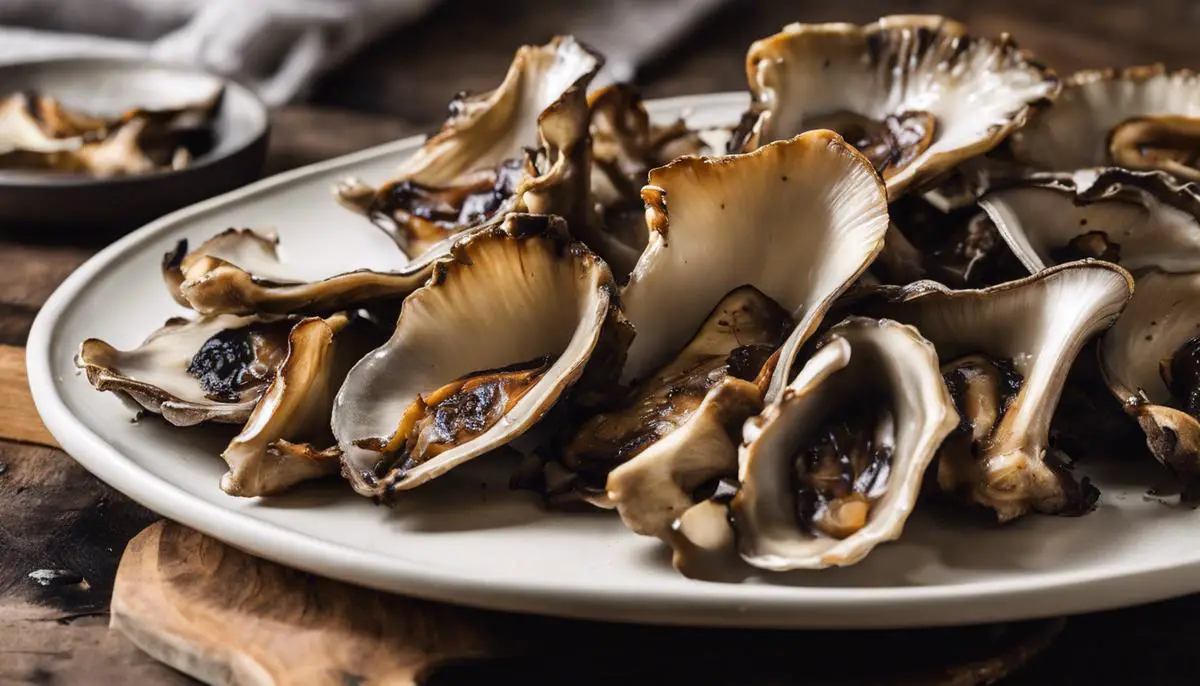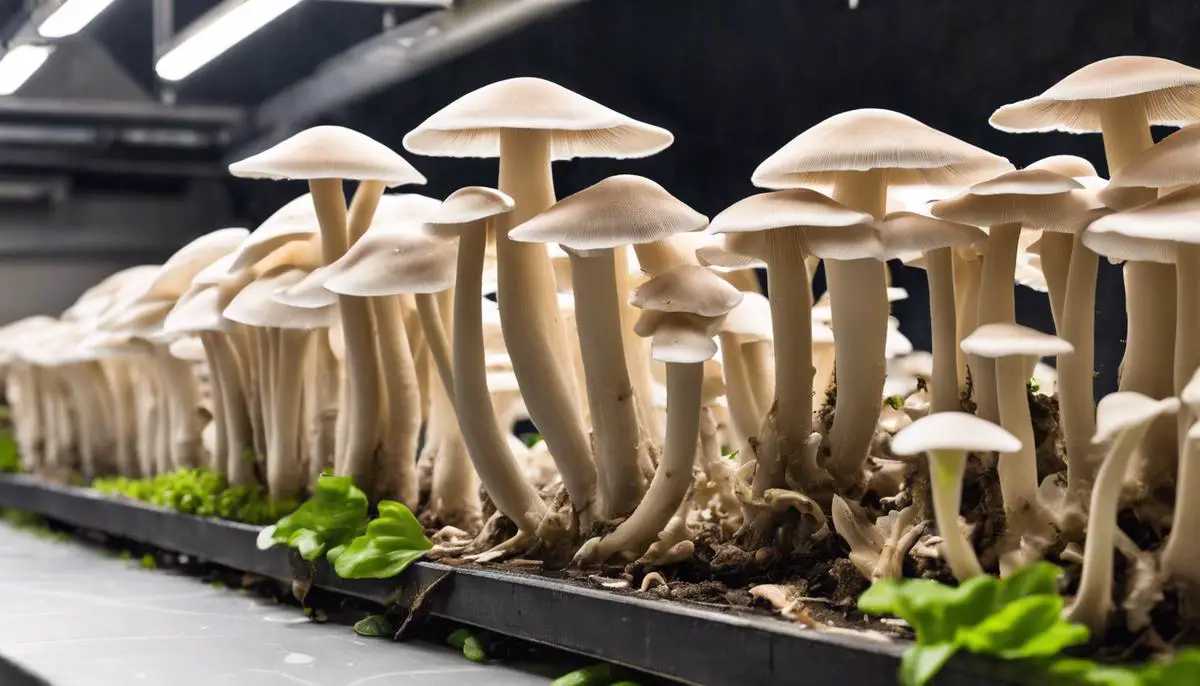
Identification & Varieties
Oyster mushrooms, with their distinctive oyster-shaped cap, come in a variety of colors including white, gray, tan, blue, and golden. Their gills line the mushroom's underside and stretch down the stem to the wood or substrate they grow on. As saprotrophic fungi, they feast on dead organic matter, thriving in habitats like decaying logs or dying trees in temperate to subtropical forests.
The king oyster mushroom (Pleurotus eryngii) is the largest in the oyster mushroom family, known for its substantial meaty stem and robust texture. Blue oyster mushrooms (Pleurotus ostreatus var. columbinus) display a stunning blue hue that fades with cooking, offering a delicate flavor. Golden oysters (Pleurotus citrinopileatus) have bright yellow to golden caps and a slightly peppery taste.
Oyster mushrooms are generally found from late fall through early spring but can appear year-round depending on climate conditions. Mild weather patterns can stimulate their growth. When foraging, it's vital to accurately identify the mushrooms, noting their habitat (primarily on hardwoods but sometimes conifers), cap shape, gill attachment, and stem presence. Caution must be taken against the poisonous look-alike, Omphalotus nidiformis, which grows in similar habitats.1
Understanding the unique characteristics of oyster mushrooms enriches the culinary experience and ensures safety when harvesting them in the wild.

Culinary Uses
Oyster mushrooms are celebrated in the culinary world for their enchanting taste profile, meaty texture, and adaptability. Their flavors range from the subtle brine of seafood to an undercurrent of anise. When sautéed lightly, they adopt a golden hue, becoming crispy on the edges yet tender within. This cooking method is excellent for starters or as an addition to risottos or pasta.
Roasting oyster mushrooms brushed with olive oil and seasoned results in umami-rich morsels with a smoky flavor. This method achieves a hearty texture suitable for vegan or vegetarian dishes seeking to mimic the consistency of meat. Grilling marinated oyster mushrooms bestows a charred exterior that complements their inherent moisture, making them a flavorful alternative to conventional grill fare.
Nutritionally, oyster mushrooms are rich in:
- Protein
- Fiber
- Vitamins (including vitamin D and B vitamins)
- Iron
- Potassium
Incorporating them into a balanced diet offers both culinary exploration and holistic health benefits.2 Their adaptability allows them to be used in diverse cuisines, from Asian stir-fries to rustic Western plates.
Oyster mushrooms continuously defy their simplicity, showcasing nature's generosity. Whether in miso soup, a po'boy sandwich, or a sophisticated European entrée, they invite us to engage conscientiously with our sustenance.

Cultivation & Sustainability
Oyster mushroom cultivation is a beacon of sustainability, highlighting regeneration and environmental empathy. The journey begins with substrate preparation, where waste materials like sawdust, straw, coffee grounds, and agricultural byproducts are repurposed as a growing medium for mushroom spores. This process diverts waste from landfills and gives it a second life.
The inoculation process involves introducing spores or mycelium to the prepared substrate under controlled conditions that mimic the forest floor. Meticulous management of humidity, temperature, and carbon dioxide levels is crucial during the fruiting phase, where the mushrooms reveal their abundance.
Cultivating oyster mushrooms offers environmental benefits beyond waste reduction. These organisms are nature's recyclers, capable of bioremediation – breaking down pollutants and rejuvenating contaminated landscapes. Their ability to improve degraded soils and waterways showcases their role as custodians of ecosystems.
Energy use, particularly for climate control in commercial operations, remains a challenge in mushroom cultivation. However, this presents an opportunity for innovation, such as the adoption of renewable energy solutions like solar power. By harnessing technology and renewable resources, mushroom farms can significantly reduce their carbon footprint and energy costs.3
Oyster mushroom cultivation is a testament to human ingenuity's potential to coalesce with nature's rhythms. As we strive for a future that demands innovation in harmony with conservation, mushroom cultivation reminds us of our interconnectedness with the natural world, advocating for a future where nourishment and sustainability flourish together.

The cultivation of oyster mushrooms intertwines ancient wisdom with modern sustainability, offering a model for living in harmony with nature. As we seek ways to sustainably feed our growing population, oyster mushrooms exemplify how we can turn waste into a valuable resource, embodying the principles of regeneration and respect for our ecosystem.
- Kuo M. Pleurotus ostreatus: The Oyster Mushroom. MushroomExpert.com. 2007.
- Çağlarırmak N. The nutrients of exotic mushrooms (Lentinula edodes and Pleurotus species) and an estimated approach to the volatile compounds. Food Chem. 2007;105(3):1188-1194.
- Stamets P. Growing Gourmet and Medicinal Mushrooms. Ten Speed Press; 2011.



